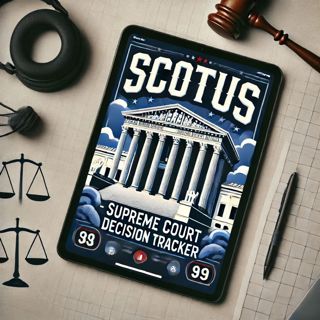
"Biden DOJ Fights for Terrorism Victims' Justice, as Courts Navigate COVID-19 Disruptions"
The Biden administration's Justice Department is currently urging the Supreme Court to reinstate lawsuits filed by victims of terrorism against the Palestinian Authority. This move underscores a significant legal effort by the U.S. government to hold entities accountable on an international scale for acts of terrorism.In another recent court development, the 8th Circuit Court of Appeals made a notable ruling in United States v. Robert Wolter, affirming the decision made by the district court. This particular case, judged on August 13, illustrates ongoing judicial processes in handling regional legal disputes within the United States.Meanwhile, in the realm of academia and COVID-19 related legal battles, Montana State University successfully won an appeal in a lawsuit regarding tuition refunds. The case was initiated by a student who sought reimbursement for the Spring 2020 semester fees after the pandemic necessitated the cessation of in-person activities and a shift to online learning. This lawsuit highlights the challenges faced by educational institutions and students as they navigate the financial and educational disruptions caused by the global pandemic.These distinct cases, from international terrorism litigation to educational refund policies during the pandemic, reflect the wide array of issues currently traversing the U.S. legal system, revealing the complex intersections of law, policy, and everyday lives.This content was created in partnership and with the help of Artificial Intelligence AI
13 Aug 20241min

Supreme Court Ruling Impacts Former President Trump's Election Subversion Case
In a significant development from the Supreme Court, the issue of presidential immunity has once again come into the spotlight following a ruling that has broader implications for legal cases involving former presidents. Specifically, this decision is affecting the progression of a high-profile case related to former President Donald Trump's actions during the 2020 election.The case, overseen by special counsel Jack Smith, focuses on allegations of election subversion by Trump. Following the Supreme Court's recent decision on presidential immunity, the legal team led by Smith has sought a delay in the proceedings. This move suggests that the Supreme Court's ruling may limit the scope of charges or the extent of legal actions that can be taken against a former president.The case has been unfolding in a federal court in Washington D.C., under Judge Tanya Chutkan. The Supreme Court's ruling is critical as it sets a precedent that could potentially shield former presidents from certain legal liabilities, altering how such cases are traditionally handled. This marks a pivotal moment in U.S. jurisprudence, reflecting the ongoing debate over the legal boundaries of presidential actions and post-presidential accountability.The implications of the Supreme Court's decision are far-reaching, likely affecting not only the Trump election subversion case but also other cases where presidential immunity could be claimed. This development underscores the complex balance between holding high-ranking officials accountable and respecting the legal protections afforded to their unique office. The decision also prompts a broader discussion on the extent to which former presidents can be held liable for actions taken while in office, a subject that continues to be defined through legal battles and legislative discussions.This content was created in partnership and with the help of Artificial Intelligence AI
9 Aug 20241min

"Navigating the Crossroads of Law, Politics, and the Supreme Court: Controversial Rulings and Legislative Challenges"
The U.S. Supreme Court often finds itself at the center of significant national debates and controversies due to its role in interpreting the Constitution. Recent events illustrate this central role in American jurisprudence and political discourse.Senate Minority Leader Chuck Schumer reportedly proposed legislation that could challenge established judicial norms. The legislation in question would direct lower courts to disregard specific Supreme Court rulings. This proposition touches on the foundational principles of American law where "the judicial power of the United States" is constitutionally vested in the Supreme Court. Such a directive from Congress directing judicial decision-making at lower court levels could indeed create a constitutional crisis by undermining the traditional separation of powers where courts are generally free from direct legislative oversight in their judicial reasoning and decision-making processes.In a separate development, the Supreme Court chose not to rule in a highly contentious case from Idaho relating to the Emergency Medical Treatment and Labor Act (EMTALA). This legislation mandates that patients presenting in an emergency at any hospital must be stabilized and treated, irrespective of the state laws that might otherwise restrict such treatments, like abortion. This absence of a decision leaves unresolved questions about how states might enforce laws criminalizing specific emergency medical procedures, including those protected under federal law such as EMTALA.Another significant Supreme Court decision, stemming from a case known as "Martin v. Boise," has spurred action and concern amongst homeless advocacy groups. The case dealt with whether cities can criminalize homelessness and led to a broader discussion on the rights of the homeless in public spaces. The subsequent Grants Pass decision has further added to the discourse, as the Supreme Court's decision underscored the limited protections homeless individuals have under the current legal framework and highlighted the ongoing criminalization they face.These cases and legislative proposals underscore the complex interplay between federal law, state law, and Supreme Court rulings in shaping U.S. legal and social landscapes. The implications of these legal decisions and proposed laws are profound, illustrating the ongoing tension in America's federal system, and setting the stage for more heated debates on the power dynamics between the legislative and judicial branches of the government.This content was created in partnership and with the help of Artificial Intelligence AI
8 Aug 20242min

Supreme Court Rulings: Immunity, Bankruptcy, and Antitrust - Shaping the Legal Landscape
Justice Neil Gorsuch of the U.S. Supreme Court recently defended the Court’s decision that upheld a claim of presidential immunity in relation to a legal battle involving former President Donald Trump. His defense came as he engaged in promotional activities for his new book, suggesting that the decision aligns with legal precedent, although it has stirred debate among legal circles and the public.In other news, a significant Supreme Court ruling on bankruptcy is expected to have profound implications on Catholic abuse lawsuits. Legal expert Czarnetzky noted that the decision could disrupt the way the U.S. bankruptcy code has traditionally been used to manage mass tort litigations, such as those involving multiple claims of abuse within the Catholic Church. This shift could alter the landscape for victims seeking justice and the institutions handling these lawsuits.Additionally, the Supreme Court recently made headlines with its decision against Google, finding it guilty of anti-competitive practices in its handling of its search engine operations. This landmark antitrust case draws parallels to the early 20th-century monopoly regulation, notably reminding legal historians and economists of the 1911 Standard Oil case. The decision signifies a renewed scrutiny on large technology firms, echoing the United States' historical stance against monopolistic enterprises. This could set a precedent that might reshape the balance between large tech companies and regulatory frameworks set to ensure competitive fairness in the digital age.This content was created in partnership and with the help of Artificial Intelligence AI
7 Aug 20241min

"Supreme Court Rulings Shake Up Local Governance Across America"
The ripple effects of the U.S. Supreme Court's decisions, particularly those affecting local governance, are witnessed across various cities and states grappling with societal issues manifesting around homelessness and gun control. Several local governments are revisiting and reassessing their policies in light of these landmark decisions, with responses varying significantly across different jurisdictions.In Bozeman, Montana, the city commission is initiating a review of its homeless camping regulations nearly a year after their implementation. This move reveals the ongoing struggle many cities face in balancing the need for public order and the rights of the homeless population. The review comes at a critical moment, reflecting a broader national conversation spurred by a Supreme Court ruling from last June. The court ruled in favor of an Oregon town that sought to enforce its homeless camping ordinances, emphasizing the increasing tension between local government controls and homeless rights.Similar discussions are resurfacing in Elkhart, Indiana, where city leaders have revisited their homeless ordinances following the Supreme Court’s decision. These discussions underline the varying degrees of enforcement and adaptation cities are considering in the aftermath of the ruling, indicating a diverse landscape of municipal responses nationwide.On a different note, the Supreme Court’s influence stretches into areas of gun control, highlighted by a surge in applications for gun carry permits in New Jersey. Following a June 2022 Supreme Court ruling that declared a constitutional right to carry firearms, New Jersey experienced a staggering 2500% increase in permit applications. This underscores a significant shift in public and legal attitudes towards gun ownership and carries privileges, reflecting the Supreme Court's substantial impact on American legal and cultural landscapes.Through these examples—whether addressing homelessness or gun rights—the decisions of the Supreme Court not only shape federal law but also deeply influence local policies and community practices. These topics continue to drive complex and often contentious debates across the country, as local governments strive to navigate the intricate balance between upholding constitutional rights and maintaining public safety and order. The outcomes of these local reviews and adjustments will likely continue to ripple across the nation, contributing to an evolving dialogue on civil liberties and societal norms.This content was created in partnership and with the help of Artificial Intelligence AI
6 Aug 20242min

"Tug-of-War: Supreme Court Rulings Reshape the Delicate Balance Between Legislation and Judicial Interpretation"
As the Supreme Court navigates profound shifts in U.S. legal paradigms, pivotal rulings and statements from justices highlight the dynamic tension between legislative comprehensiveness and judicial interpretation. The Administrative Procedure Act, originally set to empower courts to discern the definitive meanings of statutes, reveals deeper implications given the Court's current composition and its approach to administrative governance. This issue circles back to the broader implications of the potentially waning influence of the Chevron doctrine, which historically has accorded administrative agencies deference in interpreting ambiguous statutes. The doctrine's future hangs in the balance as justices critique the surge in legislation and regulation.Furthermore, localized legal battles, such as those concerning Oregon's homeless camping laws, spotlight how Supreme Court decisions ripple through state policy and civic life. Oregon's current legislative stance, resistant to amending regulations that limit municipal powers over homeless camping, underscores a broader national struggle. Local governments seek autonomy to manage social issues, while higher judicial rulings and state laws frame their regulatory confines. This tension illustrates a fundamental challenge in balancing societal, legal, and political priorities in a diverse and politically polarized nation.Adding a more personal and interpretative dimension to these legal and administrative debates, Justice Neil Gorsuch's reflections on the profusion of laws and regulations cast a critical light on modern governance. His perspective emphasizes the potential overreach of legislative bodies and the consequent risks to individual freedoms and rights. Such opinions, emerging from the Supreme Court's deliberations, shape public and scholarly debate about the nature and scope of government authority across different jurisdictions.The evolution of these discussions will significantly impact how laws and regulations are crafted, interpreted, and applied, shaping the contours of American jurisprudence in an era of intense scrutiny and transformation. Policymakers, legal experts, and citizens alike are called to reflect on the balance between necessary regulation and the preservation of foundational liberties in a complex legal landscape. This ongoing judicial narrative marks a critical juncture in the interpretation of American law, with lasting implications for both the reach of regulatory agencies and the protection of citizen rights under an increasingly scrutinized legal framework.This content was created in partnership and with the help of Artificial Intelligence AI
5 Aug 20242min

Senate Majority Leader Proposes "No Kings Act" to Challenge Supreme Court Ruling on Presidential Immunity
In a strategic move likely to stir considerable political controversy, Senate Majority Leader Chuck Schumer has proposed the "No Kings Act," a legislative response aimed at counteracting a recent U.S. Supreme Court decision concerning presidential immunity. This legislation seeks to reaffirm that U.S. presidents, both sitting and former, are not above the law, a principle that resonates deeply with democratic tenets but clashes with the perceived implications of the Supreme Court's ruling. This bold legislative endeavor underscores a growing divide on views of executive power and legal accountability.Meanwhile, former President Donald Trump is actively challenging his own legal battles. Following the controversial Supreme Court decision, Trump has pushed forward a reply brief in his attempt to overturn his conviction in the case of New York v. Trump. His legal team's maneuver is predicated on the outcomes and interpretations of the high court's recent stance on related issues, marking another significant instance where Supreme Court decisions are directly influencing high-profile legal appeals.Adding to the Supreme Court's dynamic caseload, the Pennsylvania Supreme Court has agreed to re-examine a chilling case involving the death of a Philadelphia woman initially ruled as a suicide. The woman, found with 20 stab wounds in a case dating back to 2011, had her cause of death controversially classified. Her family's relentless pursuit for justice has brought the case into the halls of the state's highest court, which will now delve into the complex questions surrounding the original investigation and ruling.Each of these instances reflects the broader implications and reach of the United States Supreme Court in addressing issues of national legality and justice. From legislative reactions aiming to define the limits of presidential powers to high-stakes legal appeals and contentious criminal case reviews, the influence and decisions of the court continue to ripple across multiple facets of American life, shaping the landscape of U.S. legal and political discourse.This content was created in partnership and with the help of Artificial Intelligence AI
2 Aug 20242min

Supreme Court Rulings Reshape Labor, Self-Defense, and Reproductive Rights Landscape
The Supreme Court's rulings this past term have sparked intense discussions and possible long-term consequences, affecting everything from labor relations to individual rights in self-defense scenarios and reproductive rights.In a significant ruling that impacts federal regulatory power, the Supreme Court curtailed the legal protections typically afforded by federal agencies, as seen in their decision regarding Starbucks and the National Labor Relations Board (NLRB). This decision underlines a continuing trend where the Court appears skeptical of the expansive reach of federal regulatory authority, which could influence how agencies enforce laws relating to labor, environment, and consumer protections.Another notable decision came from the Minnesota Supreme Court, which set a precedent in self-defense cases. The ruling made it clear that individuals cannot brandish a deadly weapon in self-defense if there is a reasonable opportunity to retreat. This decision raises questions about the boundaries of self-defense and could influence future cases where the right to self-defense is claimed under urgent circumstances.Additionally, the divisive case of United States v. Idaho regarding abortion care showed the complexities and polarized views surrounding reproductive rights. The case, which was ultimately sent back to the district court, highlights ongoing legal and ethical debates following changes in national abortion laws. This back-and-forth reflects the contentious and often unpredictable landscape of abortion rights in America post the overturning of Roe v. Wade.These decisions from different courts illustrate an evolving judicial landscape where definitions of rights and regulatory reach are actively being contested and redefined. The outcomes not only shape the immediate legal framework but also set the stage for future debates and litigation on what role the judiciary should play in governance and societal norms. As these legal interpretations continue to unfold, they will undoubtedly influence public policy and individual rights across various sectors.This content was created in partnership and with the help of Artificial Intelligence AI
1 Aug 20242min





















